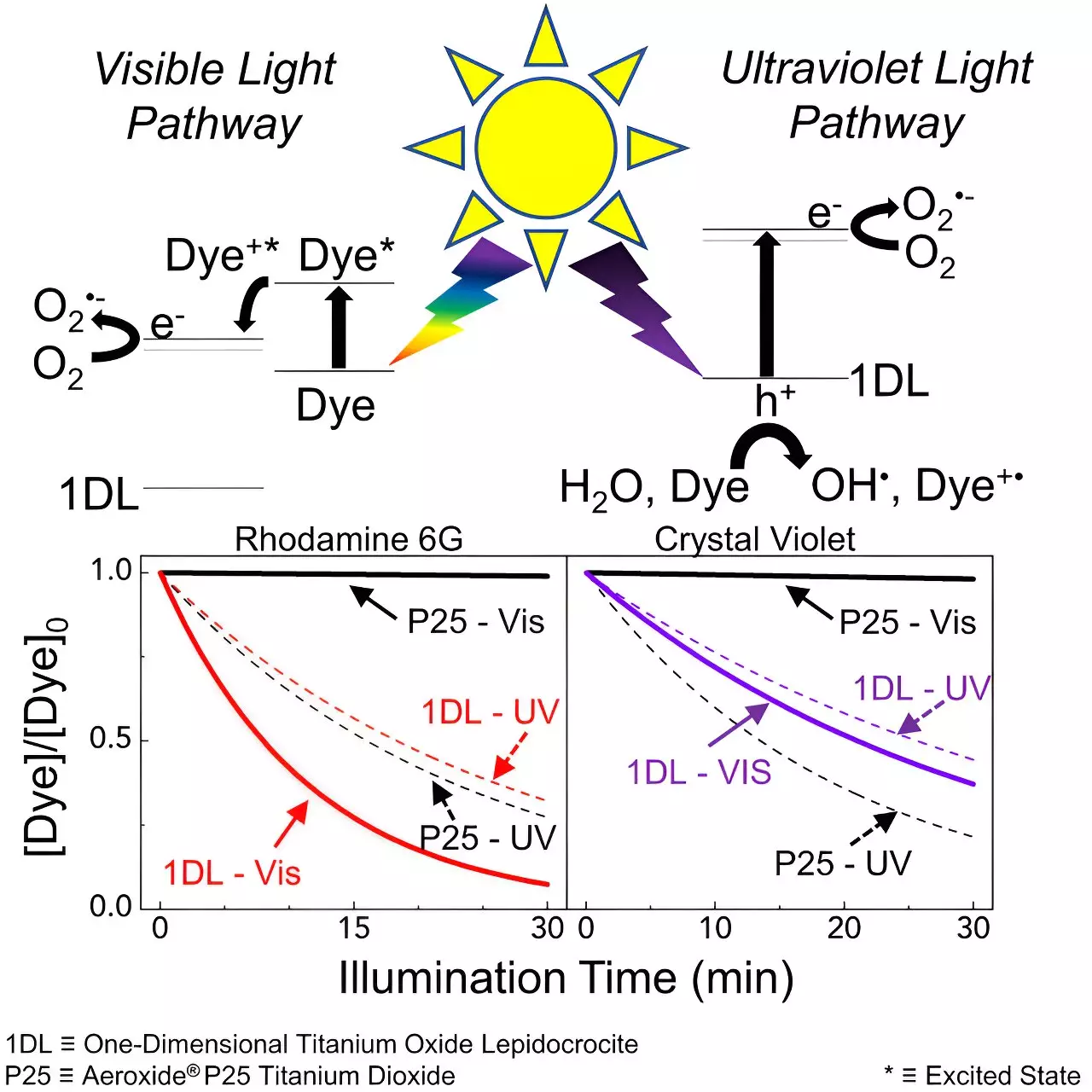Researchers at Drexel University’s College of Engineering have made a groundbreaking discovery in the field of wastewater treatment. By harnessing the power of a one-dimensional, lepidocrocite-structured titanium oxide photocatalyst material, they have developed a nanofilament capable of effectively breaking down and eliminating toxic dye pollutants found in wastewater. This revolutionary technology has the potential to significantly improve the water treatment process and address the pressing issue of wastewater pollution.
Wastewater pollution is a major environmental concern worldwide, with nearly 380 billion cubic tons of wastewater being generated globally each year. One of the main challenges in wastewater treatment is the presence of high-toxicity dyes, which are discharged in large quantities by various industries such as textiles, cosmetics, inks, and paper manufacturing. These dyes carry potential carcinogens and pose a significant threat to human health and the environment.
Traditional wastewater treatment methods like sedimentation, biological oxidation, and chemical-physical treatment have proven to be ineffective in removing dyes from water due to the complex molecular structure and water-soluble nature of the dyes. Adsorption techniques with various materials, such as activated carbon and clay, have been used in the past but only result in the separation of the dye from the water, without completely eliminating it. Photocatalysts, which were previously considered a promising solution, have also failed to provide a sustainable and energy-efficient method for dye removal, as they typically require UV light treatment.
The Breakthrough: Nanofilament Photocatalysis
The research team at Drexel University has successfully developed a nanofilament material that has the ability to break down and eliminate two common dye pollutants, rhodamine 6G and crystal violet, under visible light. This nanofilament material, with its unique lepidocrocite structure, acts as a photocatalyst when illuminated by visible light. The dye pollutants adsorb onto the surface of the nanofilament and undergo photocatalysis, leading to their degradation into harmless byproducts like carbon dioxide and water.
The key to the dye degradation and self-sensitization process lies in the nanofilament’s ability to generate electron holes and highly reactive oxygen species (ROS), such as hydroxyl radicals, superoxide radicals, and singlet oxygen. This process enhances the degradation of the dye pollutants, making the nanofilament material highly effective in removing them from wastewater.
The discovery of this nanofilament material opens up a world of possibilities for improving water treatment processes and addressing the challenges of wastewater pollution. The use of visible light, instead of UV light, significantly reduces the energy consumption and financial costs associated with treatment.
Not only does this nanofilament offer a sustainable solution to dye removal, but it also has the potential to be applied in other fields like solar cells and optical devices. Additionally, earlier studies have shown that this nanofilament can harness sunlight for hydrogen separation, which could greatly contribute to green fuel generation.
A Promising Future for Water Treatment
The study conducted by the researchers at Drexel University provides strong evidence of the effectiveness of the nanofilament in improving water treatment capabilities. By sensitizing the nanofilament material with the dye pollutants, a symbiotic relationship is formed that results in cleaner and less toxic water.
This breakthrough discovery represents just the beginning of the possibilities offered by this nanofilament material. As further research and development are conducted, its potential applications in water treatment, solar cells, and optical devices may revolutionize these fields and contribute to a more sustainable future.
The development of this nanofilament material is a game-changer in the fight against wastewater pollution. It offers a sustainable solution to the removal of toxic dye pollutants, reduces energy consumption, and opens the door to various applications in other industries. With continued research and implementation, this nanofilament technology has the potential to transform water treatment processes and make a significant impact on the global environmental crisis we face today.


Leave a Reply